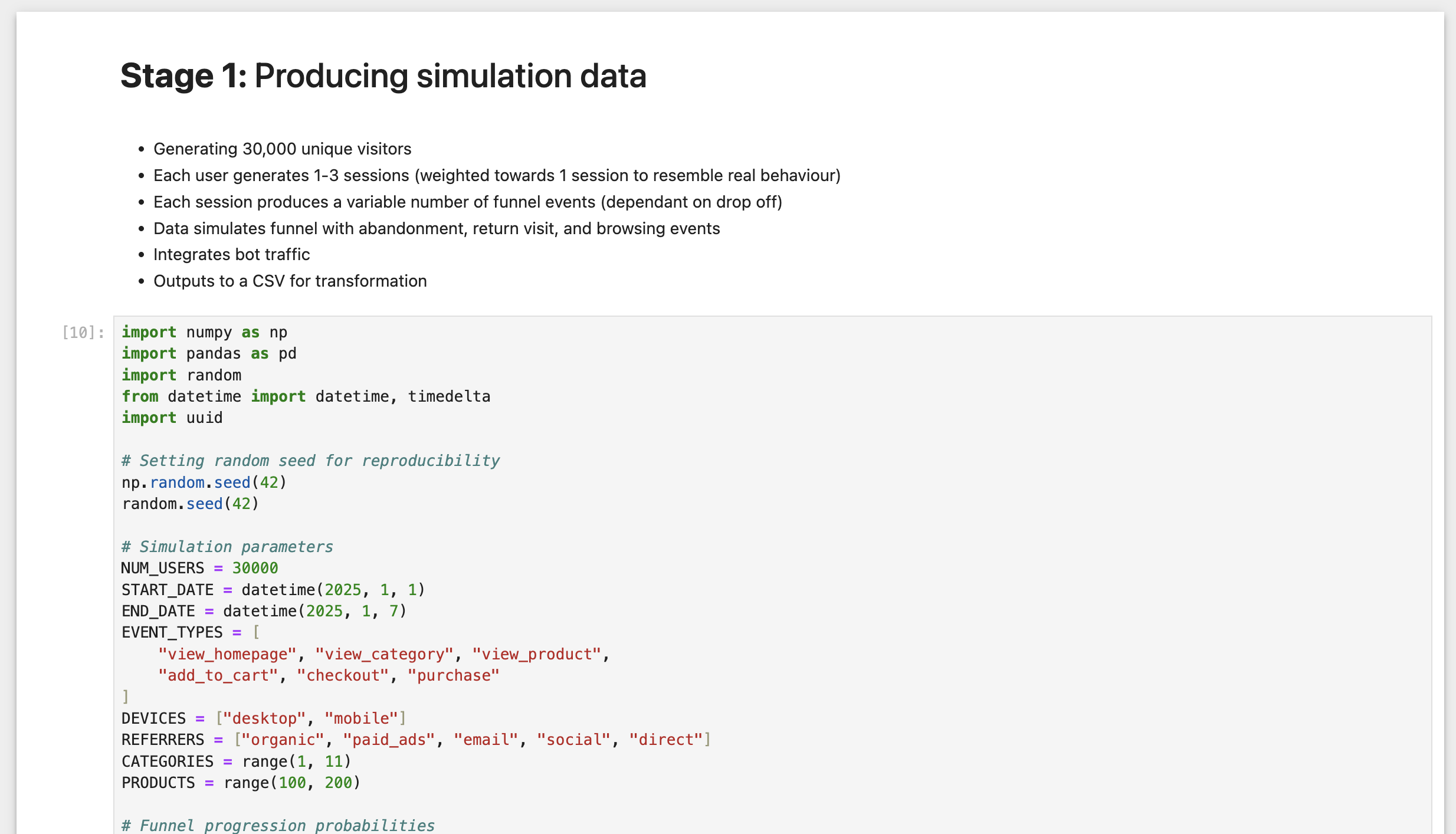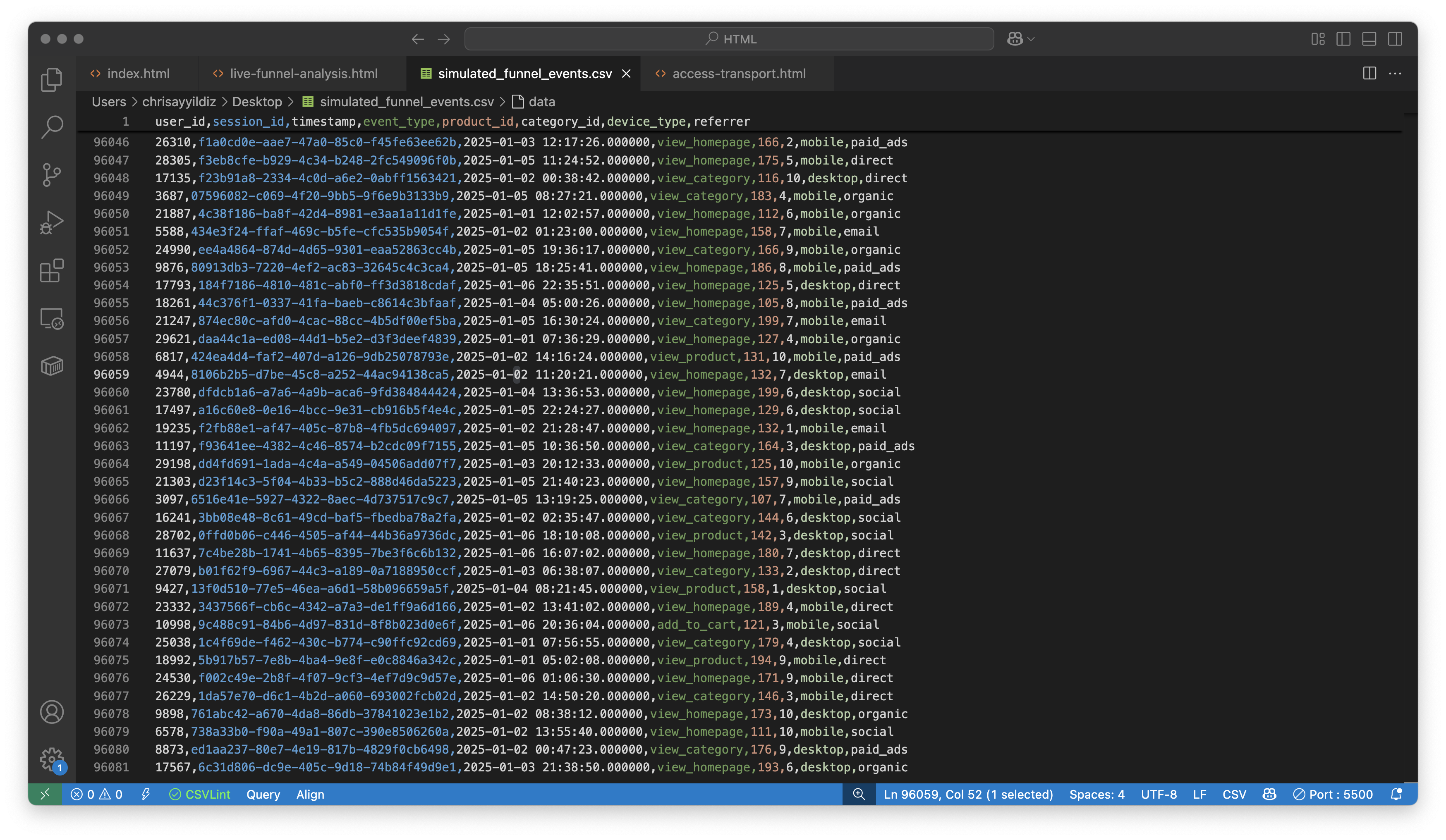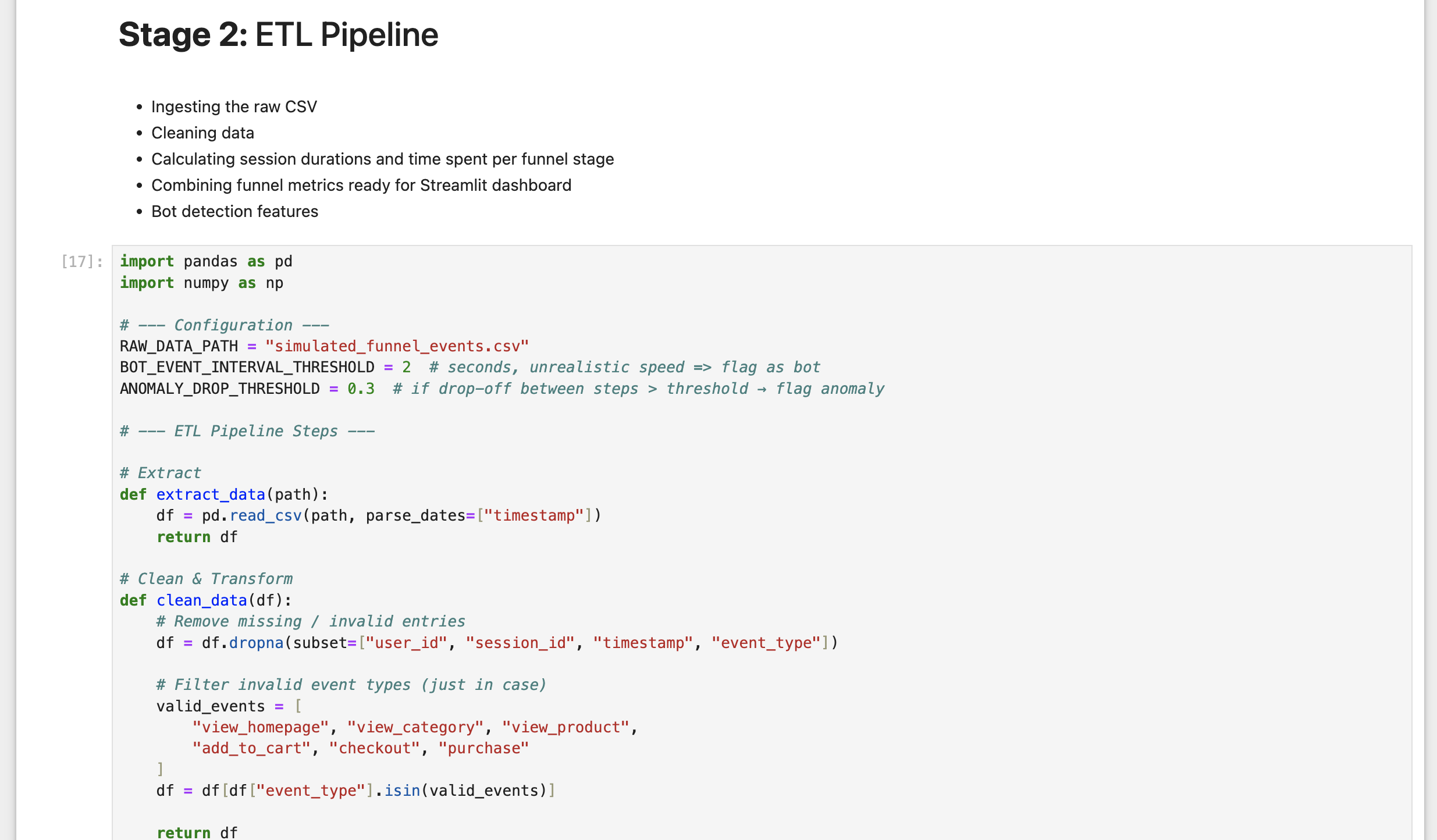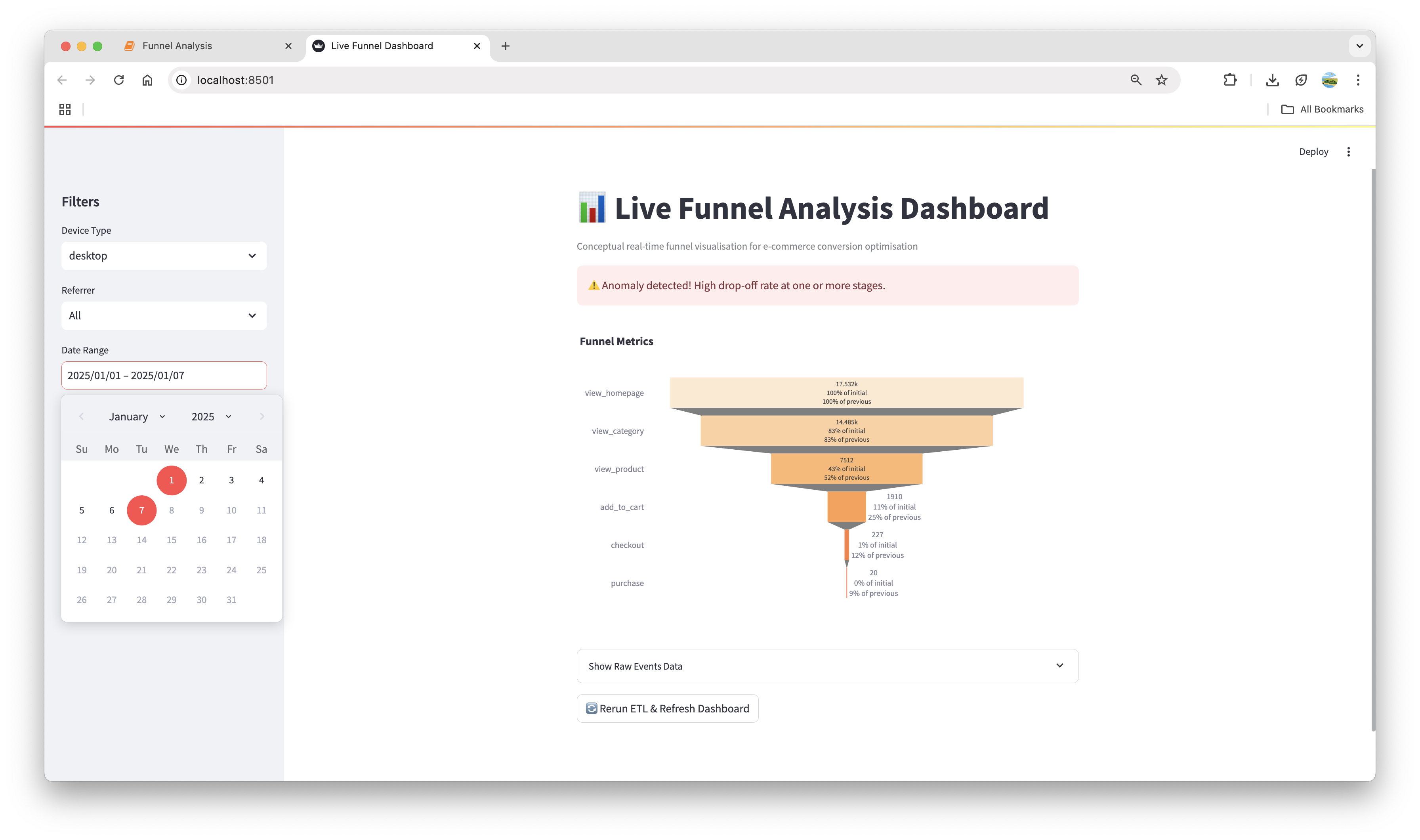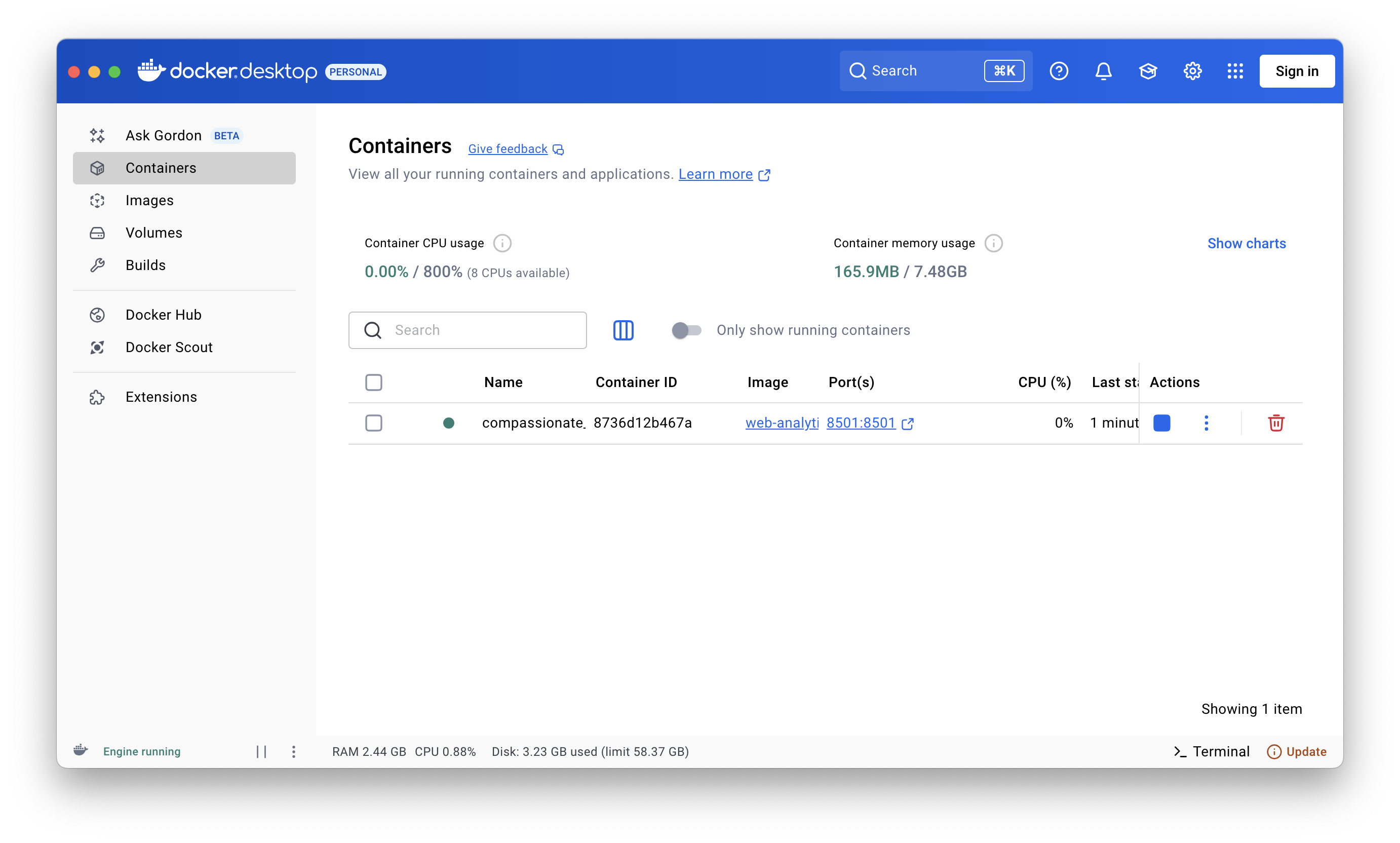This project was self built and features an interactive dashboard to simulate and visualise real time e-commerce user progress through a conversion funnel. I aimed to provide a viewpoint of customer behaviour across each stage to help identify repeating drop-off points and opportunities for optimisation.
The project utilises data simulations, an ETL pipeline, and offers analytical insights to solve the issues identified in the data.
